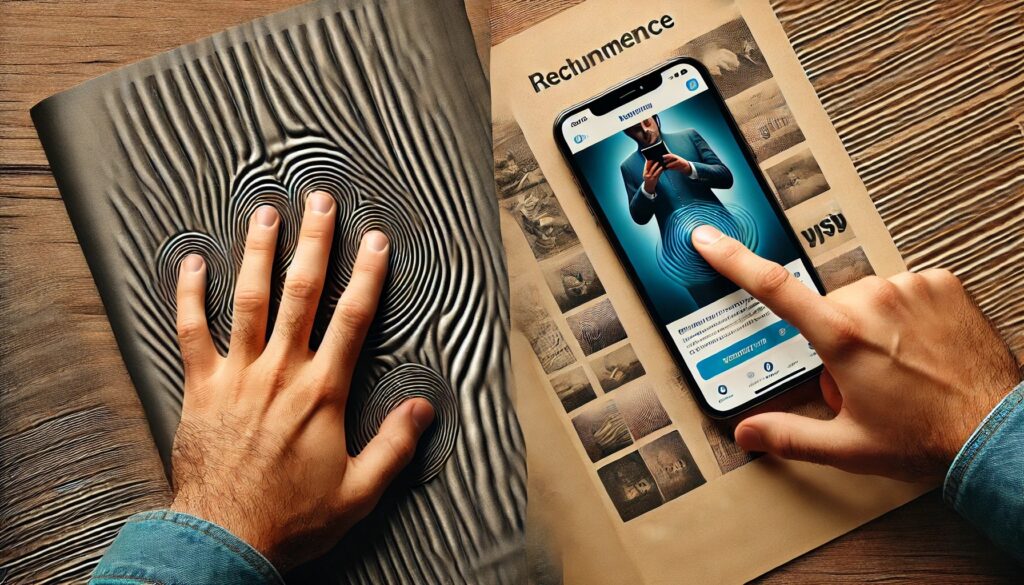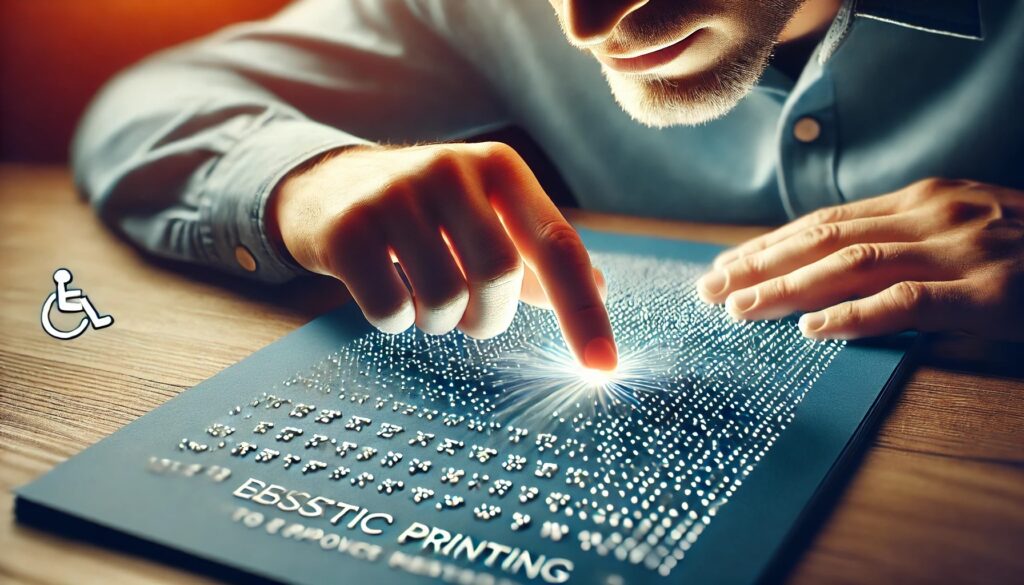
Haptic Printing – Adding Touch to Printed Materials
Consumers make a choice within fractions of a second. They do so subconsciously, not always guided by rational decision-making and weighing up options, but instead relying on an inbuilt guide based on our senses, and how we feel.
That’s where haptics come in, three-dimensional textures and patterns you can add to your printing materials. They help reinforce the message of your marketing efforts, creating a trigger to make a purchasing decision and can make a difference with consumers who are on the fence about your product.
Touch in a Digital Age
Most companies now stick to digital marketing exclusively. It’s the new thing, the shiny toy and with most of us glued to our smartphones, people assume it’s the most effective way to market products. It’s not an unreasonable thought, and we’re certainly not saying you should ditch digital.
But there’s a reason why companies are still using print in their materials. Even digital-only companies like Zalando and AirBnB have started releasing print marketing materials, even going as far as customer magazines. Let’s just say they’re not doing it for the sake of it.
Touch goes back to basics, it roots people to sensory communication that provides comfort and substance. Our brains are engaged with haptics in approximately 40% of their function, the sensory experience is just that important to how we navigate the world.

That’s why adding haptics to your print materials can be so powerful. It’s an experience that’s almost going extinct in the midst of a digital revolution. And when we are being overloaded with a fast-moving digital environment, a ‘going back to basics’ physical marketing format can be super effective.
Haptic Print Does Not Compete with Digital
The reason print ‘fails’ for many marketing projects is that it tries to match exactly what digital now does. However, print, especially in 2024, does not function in the same way, nor should it have the same goals.
Print and digital are not either/or. Instead, they should be used in a complementary fashion, in a marketing loop that ultimately turns leads into customers. Rethink how you run your marketing projects and consider their aims.

Think back to the points we’ve made above about touch in a digital age. If print is so different to digital marketing, why try and use the same exact text, attempting to achieve the same experience for your leads?
Olaf Hartmann, an expert in sensory marketing and author of the best-seller “Touch!”, explains how in a ‘tsunami of digital media’ touch can have a slow sensory effect that’s just impossible to achieve with a smartphone or iPad.
So, reframe print as a slow medium. Don’t try and make it ‘pop’ like you would with a digital ad. Give it substance, layer it both figuratively and literally (with haptic print!).
More Than Just ‘Raised Print’
When haptic printing is mentioned, most people think of slightly raised letters or graphics on a traditional piece of marketing material. And while this method certainly falls under haptic printing, technology has expanded the possibilities far beyond this.
UV coating, for example, can mimic the touch of other surfaces. When you’re next at the supermarket, feel diaper packaging, for instance. You will notice that in some cases, companies use UV technology to mimic the feel of skin, giving the consumer the sensation that the product will be safe and comfortable for the baby.
Tactile printing can go very detailed indeed, with some printers capable of creating textures like wood, art, living creatures and tiling. You can even print materials that look just like a leaf, with every fold, wrinkle and even transparency.
If you are creative, the possibilities are endless. Marketing campaigns can be completely transformed, giving recipients of your leaflets and brochures a unique experience that stands out from standard alternatives.
And of course, you can still very much make use of more standard embossed or raised printing technology. It’s simple, still helps you provide a unique experience, and it instantly raises the
level of quality without requiring a big monetary investment.

Accessibility: Touchable Print and Braille Printing
Many people will tout digital’s flexible consumption options. Using features on a standard browser, people can switch off the bells and whistles and just read your content in black and white. For those with visual impairments, built-in features allow users to play an audio of your content.
With print, it’s clearly a little more difficult. Most printed marketing materials are not at all accessible, with 2D content the norm. For many, it’s a good enough reason to stick to digital alternatives.
However, the progress of tactile means that many ‘standard’ printers can potentially produce words that are accessible to those who are either blind or have low vision at a very affordable price point.
Braille printers have also made developments in recent years, meaning it’s far less expensive than what most business owners still have in their minds from years ago.
Improving accessibility in your marketing materials is not just the kind thing to do, but will also help improve brand reputation, showing that you care about all of your customers. This alone can help you drive additional sales.
Haptic Printing: Considering the Costs
Many business owners will have read this piece thinking, ‘that’s all well and good, but it sounds expensive’. And yes, we’ll be up-front: it’ll be pricier than your standard cheap printing service.
However, two factors make it worth it. First, it’s far more cost effective than it was with the OG iterations of the technology. Second, reframe your marketing in terms of return on investment, not cost alone. This means setting up effective tracking for your campaigns. Google Analytics for old-school materials, if you will. Run split testing campaigns, with distinct QR codes, and landing pages, the works.
Haptic printing can add a lot to your business if used correctly. Don’t overdo it, but be subtle in its implementation, and always think of the consumer experience first and foremost.

